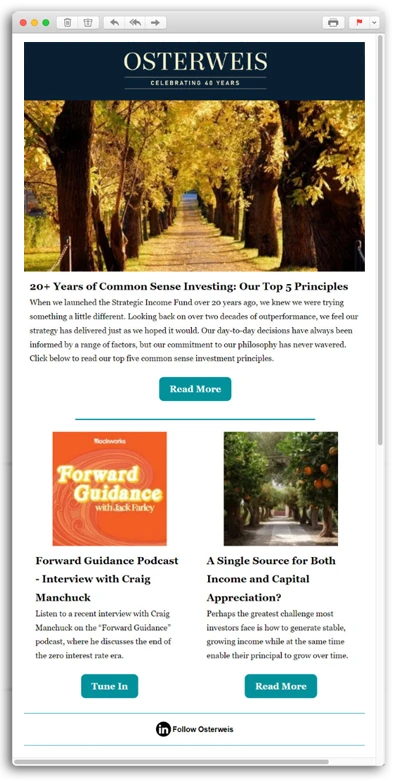Small Cap Growth Investing Across Market Cycles
The past few years have been a roller coaster for small cap growth investors.
- 2020 was strong, powered by a spike in technology adoption due to Covid shutdowns. The Russell 2000 Growth Index surged 34.6%.
- 2021 was a transition year. The index increased a modest 2.8%.
- 2022 was tough for most asset classes, as the war in Ukraine, rampant inflation, and Fed tightening put downward pressure on the markets. The index declined 26.4%.
It is a great reminder that markets are both difficult to predict and subject to rapid change.
We believe it is easier to assess the ability of emerging growth companies to compound revenues and profits over multiple years. In our view, fundamental analysis is the most reliable way to identify such companies. As experienced small cap growth investors, we understand markets can be extremely volatile but strive to build portfolios that deliver long-term alpha over 3–5-year periods. To achieve our objective, we focus on a few themes that have proven effective across multiple market cycles:
- I. Balancing quality, growth, and valuation
- II. Investing for the long term while maintaining sell discipline
- III. Staying opportunistic
Balancing Quality, Growth, and Valuation
Fundamental investors generally fall into one of two camps: (1) quality growth – identifying leading companies that operate in expanding markets with high returns on invested capital or (2) value – finding stocks trading at low valuations (i.e., bargains) that have more upside than the market recognizes. Until last year, quality growth strategies had a long run of success while value managers were generally out of favor. However, both approaches can have drawbacks. The problem with quality growth companies is they tend to attract a lot of investors (as they are good businesses with strong fundamentals), so their share prices get bid up to the point where the stocks are fully appreciated and/or over-valued. The problem with value, conversely, is that such companies are generally “cheap” for a reason (i.e., they are not great long-term businesses).
Value strategies may outperform in any given year, but according to the Boston Consulting Group, “Profitable revenue growth is often the primary driver of TSR [total shareholder return] outperformance over extended time horizons. For top performers during five- to ten-year periods, revenue growth accounts for an average of 50% to 70% of value creation.”1 Indeed, the most valuable companies in the world create long-term value through consistent compounding growth of revenue and profits.
We believe that successful investing in the small cap growth space requires a nuanced approach that balances quality, growth, and valuation characteristics:
| Quality | We look for companies that are already profitable or have strong incremental profit margins and a clear path to long-term margins at scale. |
| Growth | We focus on growing companies that have the potential to increase revenues and operating margins over a 3-5-year horizon. |
| Valuation | We utilize an absolute valuation framework to determine both our entry and exit strategy, based on an assessment of long-term earnings power over the next 3-5 years.2 |
We are unabashedly small cap growth investors but also believe our focus on profitability and our absolute valuation framework are differentiators. During the peak of the most recent market cycle, some investors based their valuation methodologies solely on revenue multiples, without regard to profits. Others extended P/E multiples higher and higher. Though it was still difficult to escape the multiple headwinds to the markets in 2022, our valuation approach remained consistent.
Investing Long Term While Maintaining Sell Discipline
Another dividing line among investors is to have a long-term (buy and hold) versus a short-term (trading) orientation. Whenever possible, we are in the first camp. Our north star is to invest in great small cap franchises that can compound over multiple years. Our Anchor Point methodology3 reinforces our approach and gives us the confidence to hold/increase our positions, even when confronted with extreme market volatility.
However, we must also be realistic. Companies often encounter roadblocks on the path towards their long-term goals, and our job is to assess whether the issues are short term (recoverable) or more fundamental (non-recoverable). When we determine that our thesis is fundamentally broken, we sell. If not, we hold or add depending on long-term upside potential.
Second, as discussed above, valuation is critical. When stock prices diverge from long-term fundamentals, we adhere to our absolute valuation framework. The vagaries of smaller companies cause us to err on the side of caution.
Staying Opportunistic
Some investors prefer early-stage companies while others prefer more established businesses. We prefer to be opportunistic.
Many of the new public companies within the small cap universe are unprofitable, so we generally avoid these firms. As we have written previously, we have found they are often surrounded by hype and other factors that distort their value. We prefer to wait until a company has been publicly traded for several months, if not longer, before investing. Again, we look for companies that are already profitable or have a clear path to rising profits over time.
Still, some of our most interesting investments have been emerging businesses riding strong secular tailwinds. Often there is skepticism about growth prospects of early-stage firms, but we will invest opportunistically when we identify companies with accelerating adoption and durability. A couple of examples include Block (formerly known as Square) in fintech and Align Technologies in orthodontics, both of which were younger companies that were well positioned to capitalize on rapidly expanding markets. While most of our companies will not replicate such explosive trajectories, the key is to identify exceptional businesses that have both attractive growth prospects and strong incremental margins, as these tend to result in multiple years of compounding revenues and profits.
Final Thoughts
We firmly believe that fundamental analysis is the most effective method for identifying companies that can outperform over the long run, particularly for small cap stocks, as they generally have less research coverage than other liquid markets (e.g., large caps).
Still, the challenge of beating market indices over long periods is substantial. While markets can be extremely volatile in any given year, our process is designed to help deliver long-term alpha across market cycles by finding excellent growth companies at attractive valuations.
Our approach has translated into strong long-term results, with 3-year annualized returns of 8.47% vs. the Russell 2000 Growth Index at 0.65% and 5-year annualized returns of 10.68% vs. the Russell 2000 Growth Index at 3.51%. Our 3-year and 5-year returns put us in the top ten percent and top five percent, respectively, of all small cap growth managers in the Morningstar universe.
1 https://www.bcg.com/publications/2018/value-creation-insights-ten-lessons-20-years
2 For an example of how this works in practice, see our blog from early 2022, where we discuss why we felt software stocks had become too expensive and where we saw better value in the market.
3 Our Anchor Point methodology is our proprietary approach to assessing the growth prospects of a business. Anchor points are EPS forecasts based off two to three key business metrics/variables that we regularly monitor. We assign anchor points to each company in our portfolio.
The Fund’s annualized total returns over the one-year, five-year, ten-year, and since inception (10/1/2012) periods ending December 31, 2022 were -33.00%, 10.68%, 13.72%, and 12.89%, respectively, compared to -26.36%, 3.51%, 9.20%, and 8.99% for the Russell 2000 Growth Index over the same periods.
Performance data quoted represent past performance; past performance does not guarantee future results. The investment return and principal value of an investment will fluctuate so that an investor’s shares, when redeemed, may be worth more or less than their original cost. Current performance of the Fund may be higher or lower than the performance quoted. Performance data current to the most recent month end may be obtained by calling (866) 236-0050. An investment should not be made solely on returns. Performance prior to December 1, 2016 is that of another investment vehicle (the Predecessor Fund) before the commencement of the Fund’s operations. The Predecessor Fund was converted into the Fund on November 30, 2016. The Predecessor Fund’s performance shown includes the deduction of the Predecessor Fund’s actual operating expenses. In addition, the Predecessor Fund’s performance shown has been recalculated using the management fee that applies to the Fund, which has the effect of reducing the Predecessor Fund’s performance. The Predecessor Fund was not a registered mutual fund and so was not subject to the same operating expenses or investment and tax restrictions as the Fund. If it had been, the Predecessor Fund’s performance may have been lower. The Fund’s gross expense ratio was 1.17% and net expense ratio was 1.10% as of March 31, 2022. The net expense ratio is applicable to investors. The Adviser has contractually agreed to waive certain fees through June 30, 2023.
Opinions expressed are those of the author, are subject to change at any time, are not guaranteed, and should not be considered investment advice.
References to specific companies, market sectors, or investment themes herein do not constitute recommendations to buy or sell any particular securities.
There can be no assurance that any specific security, strategy, or product referenced directly or indirectly in this commentary will be profitable in the future or suitable for your financial circumstances. Due to various factors, including changes to market conditions and/or applicable laws, this content may no longer reflect our current advice or opinion. You should not assume any discussion or information contained herein serves as the receipt of, or as a substitute for, personalized investment advice from Osterweis Capital Management.
Complete holdings of all Osterweis mutual funds (“Funds”) are generally available ten business days following quarter end and may be viewed by clicking here. Holdings and sector allocations may change at any time due to ongoing portfolio management.
The Osterweis Emerging Opportunity Fund’s top 10 holdings as of 12/31/2022 may be viewed by clicking here.
As of 12/31/2022, the Fund did not have an investment in Block Inc.
As of 12/31/2022, the Fund did not have an investment in Align Technology, Inc.
The Morningstar Rating™ for funds, or “star rating,” is calculated for mutual funds, variable annuity and variable life subaccounts, exchange-traded funds, closed-end funds, and separate accounts) with at least a three-year history. Exchange-traded funds and open-ended mutual funds are considered a single population for comparative purposes. It is calculated based on a Morningstar Risk-Adjusted Return measure that accounts for variation in a managed product’s monthly excess performance, placing more emphasis on downward variations and rewarding consistent performance. The top 10% of products in each product category receive 5 stars, the next 22.5% receive 4 stars, the next 35% receive 3 stars, the next 22.5% receive 2 stars, and the bottom 10% receive 1 star. The Overall Morningstar Rating for a managed product is derived from a weighted average of the performance figures associated with its three-, five-, and 10-year (if applicable) Morningstar Rating metrics. The weights are: 100% three-year rating for 36-59 months of total returns, 60% five-year rating/40% three-year rating for 60-119 months of total returns, and 50% 10-year rating/30% five-year rating/20% three-year rating for 120 or more months of total returns. While the 10-year overall star rating formula seems to give the most weight to the 10-year period, the most recent three-year period has the greatest impact because it is included in all three rating periods. The Osterweis Emerging Opportunity Fund does not have a ten-year Morningstar rating at this time.
© 2023 Morningstar. All Rights Reserved. The information contained herein: (1) is proprietary to Morningstar and/or its content providers; (2) may not be copied or distributed; and (3) is not warranted to be accurate, complete or timely. Neither Morningstar nor its content providers are responsible for any damages or losses arising from any use of this information.
The Russell 2000 Growth Index is a market capitalization weighted index representing the small cap growth segment of U.S. equities.
The Russell 2000 Index is a market capitalization weighted index representing the small cap segment of U.S. equities.
Alpha is a measure of the difference between the portfolio’s actual return versus its expected performance, given its level of risk as measured by Beta. It is a measure of the historical movement of a portfolio’s performance not explained by movements of the market. It is also referred to as a portfolio’s non-systematic return.
Price-to-Earnings (P/E) Ratio is the ratio of a company’s stock price to its twelve months’ earnings per share.
Earnings Per Share (EPS) is a company’s earnings per outstanding share of common stock.
Mutual fund investing involves risk. Principal loss is possible. The Osterweis Emerging Opportunity Fund may invest in unseasoned companies, which involve additional risks such as abrupt or erratic price movements. The Fund may invest in small and mid-sized companies, which may involve greater volatility than large-sized companies. The Fund may invest in IPOs and unseasoned companies that are in the early stages of their development and may pose more risk compared to more established companies. The Fund may invest in ETFs, which involve risks that do not apply to conventional funds. Higher turnover rates may result in increased transaction costs, which could impact performance. From time to time, the Fund may have concentrated positions in one or more sectors subjecting the Fund to sector emphasis risk. The Fund may invest in foreign and emerging market securities, which involve greater volatility and political, economic and currency risks and differences in accounting methods. These risks may increase for emerging markets.
The Osterweis Funds are available by prospectus only. The Funds’ investment objectives, risks, charges, and expenses must be considered carefully before investing. The summary and statutory prospectuses contain this and other important information about the Funds. You may obtain a summary or statutory prospectus by calling toll free at (866) 236-0050, or by visiting www.osterweis.com/statpro. Please read the prospectus carefully before investing to ensure the Fund is appropriate for your goals and risk tolerance.
Osterweis Capital Management is the adviser to the Osterweis Funds, which are distributed by Quasar Distributors, LLC. [OSTE-20230221-0793]






